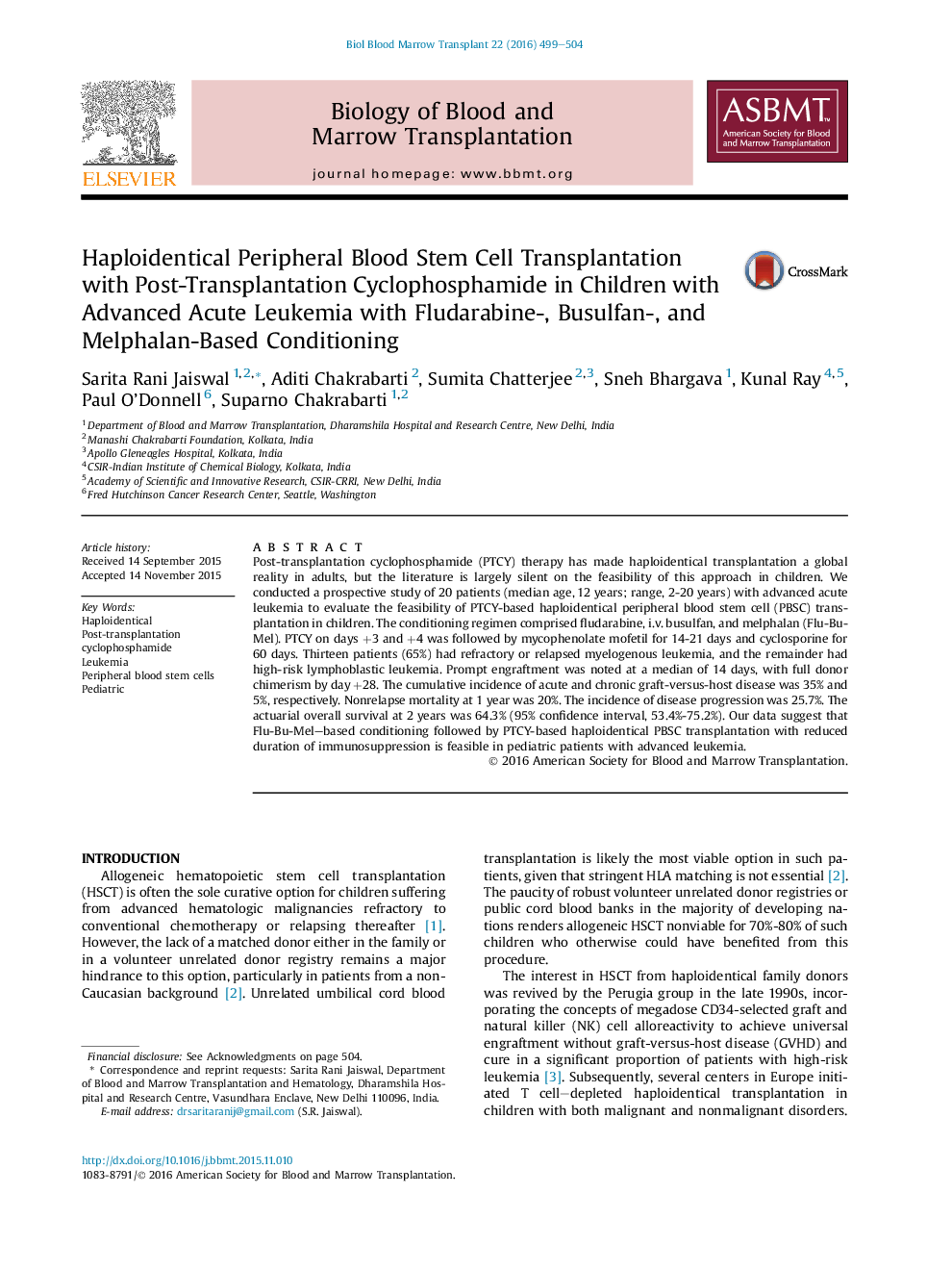| کد مقاله | کد نشریه | سال انتشار | مقاله انگلیسی | نسخه تمام متن |
|---|---|---|---|---|
| 2101803 | 1546256 | 2016 | 6 صفحه PDF | دانلود رایگان |
• Haploidentical family donor transplantation with post-transplantation cyclophosphamide (PTCY) is feasible in children with high-risk acute leukemia with acceptable rates of acute and chronic graft-versus-host-disease (GVHD) and nonrelapse mortality.
• Myeloablative conditioning with fludarabine, busulfan, and melphalan is feasible in children undergoing PTCY-based haploidentical peripheral blood stem cell (PBSC) transplantation, with a high incidence of mucositis and a limited incidence of veno-occlusive disease of the liver.
• A higher incidence of early severe GVHD is noted in children aged <10 years undergoing PTCY-based haploidentical PBSC transplantation.
• Long-term progression-free survival of 60% was observed in these children at extremely high risk of relapse.
Post-transplantation cyclophosphamide (PTCY) therapy has made haploidentical transplantation a global reality in adults, but the literature is largely silent on the feasibility of this approach in children. We conducted a prospective study of 20 patients (median age, 12 years; range, 2-20 years) with advanced acute leukemia to evaluate the feasibility of PTCY-based haploidentical peripheral blood stem cell (PBSC) transplantation in children. The conditioning regimen comprised fludarabine, i.v. busulfan, and melphalan (Flu-Bu-Mel). PTCY on days +3 and +4 was followed by mycophenolate mofetil for 14-21 days and cyclosporine for 60 days. Thirteen patients (65%) had refractory or relapsed myelogenous leukemia, and the remainder had high-risk lymphoblastic leukemia. Prompt engraftment was noted at a median of 14 days, with full donor chimerism by day +28. The cumulative incidence of acute and chronic graft-versus-host disease was 35% and 5%, respectively. Nonrelapse mortality at 1 year was 20%. The incidence of disease progression was 25.7%. The actuarial overall survival at 2 years was 64.3% (95% confidence interval, 53.4%-75.2%). Our data suggest that Flu-Bu-Mel–based conditioning followed by PTCY-based haploidentical PBSC transplantation with reduced duration of immunosuppression is feasible in pediatric patients with advanced leukemia.
Journal: - Volume 22, Issue 3, March 2016, Pages 499–504
